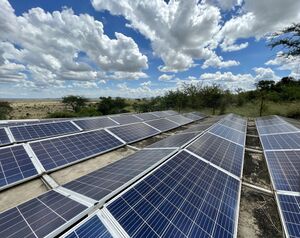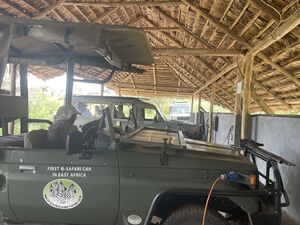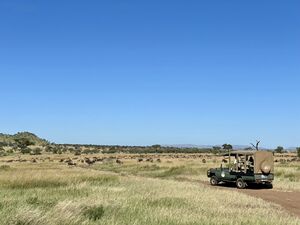Knowledge fuels change - Support energypedia!
For over 10 years, energypedia has been connecting energy experts around the world — helping them share knowledge, learn from each other, and accelerate the global energy transition.
Today, we ask for your support to keep this platform free and accessible to all.
Even a small contribution makes a big difference! If just 10–20% of our 60,000+ monthly visitors donated the equivalent of a cup of coffee — €5 — Energypedia would be fully funded for a whole year.
Is the knowledge you’ve gained through Energypedia this year worth €5 or more?
Your donation keeps the platform running, helps us create new knowledge products, and contributes directly to achieving SDG 7.
Thank you for your support, your donation, big or small, truly matters!
Eco-safari Fuelled By Sunlight and Batteries
Case study from Tanzania
Overview
Located in the Serengeti National Park, Tanzania, a unique eco-safari project has been implemented, showcasing the successful integration of solar energy and lead battery storage in off-grid safari lodges. This case study highlights the technical specifications and outcomes of the project, as detailed in two publications. [1] [2] The project started in January 2018 is stil ongoing.
Context and Decentralised Renewable Energy (DRE) and E-Mobility Solutions
The Tanganyika Expeditions lodges, disconnected from the Tanzanian utility grid, now operate with a self-sufficient electricity supply generated from sustainable solar power.
The integration of solar power has enabled the lodges to provide electricity 24/7, catering to accommodation, laundry facilities, and even warming up shower water for guests. In addition, the safari vehicles have transitioned from diesel to electric, reducing emissions and promoting eco-tourism, as noted in the publication by UNIDO ITPO Germany & Alliance for Rural Electrification [2].
Technical Specifications
The energy storage systems
As described in the Consortium for Battery Innovation publication [1], the energy storage systems, developed by energy consultant Harald Olk and supplied by system integrator Asantys Systems GmbH, feature two SMA stand-alone grids with 55 kW peak PV power, lead battery storage, and electric vehicles charged with PV power.
Components used
- SMA Sunny Tripower PV inverters
- Lead-SLA batteries for the stationary power systems
- Lithium-ion Phosphate (LiFePO4) batteries for the vehicles
- Multicluster Box 6 each with 6 SMA battery inverters Sunny Island 8.0
Inhouse DRE capacity
With a total capacity of 2 x 55 kWp solar systems and 2 x 220 kWh battery storage systems, the lodges achieved a sustainable and reliable power supply.
Energy requirements for individual safari vehicles and max operating distance per single charge
- Battery capacity of 40-80 kWh depending on the electric vehicle type
- 130-240 km depending on the electric vehicle type
Outcomes and Environmental Benefits
Outcomes
The outcomes of the project include lowered operational costs, reduced emissions and noise pollution, both for the animals and the visitors, independence from conventional fuel usage and a shift towards clean solar energy. The safari and service vehicles are then charged using the SMA stand-alone grid supplied with solar power. The solar batteries used to store the energy for the lodges are fully recyclable at end-of-life, and provide a high-performing, safe and sustainable solution.
Engagement with Local community
The case study also emphasizes the importance of engaging the local community throughout the implementation process, including needs assessment, training on solar PV and storage systems, and EV usage.
Conclusion and Inspiration
This case study showcases the successful implementation of solar integration in the eco-safari lodges of the Serengeti, providing valuable insights into the technical specifications, outcomes, and benefits of this sustainable energy solution.
It serves as an inspiring example for similar off-grid projects in the tourism industry, promoting environmental preservation and fostering a greener future.
“A project that demonstrates the great potential for a climate-friendly mobility transition in Africa through used vehicle conversion to e-drive and battery powering by solar electricity.”
Johannes Germ, Managing Director, Asantys Systems GmbH
- ↑ 1.0 1.1 "Lead batteries: energy storage case study - Eco-safari fuelled by sunlight and batteries", published by the Consortium for Battery Innovation (CBI) in March 2022, link to the publication: https://batteryinnovation.org/wp-content/uploads/2022/03/CBI-Case-Study-Tanzania.Asantys.FINAL_.pdf
- ↑ 2.0 2.1 This case study is also featured and detailed in the "E-mobility & DRE Innovations in Emerging Economies" publication, #4.1 E-mobility solutions with in-house DRE technology, p.14-15 here























